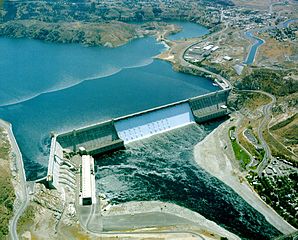It was only a matter of time that incandescent lights would one day meet their replacements – that’s replacements with an “s”. That “one day” is today.
Credit the change to technological advancement and innovation. Light-emitting-diode (LED) and fluorescent lamps have rendered incandescents practically obsolete.
Why? The LEDs are roughly 10 times more energy efficient than a comparable incandescent lamp, information at Wikipedia.com reveals.
And, switching out incandescent for LED lighting can add significant savings to the pocket book.
Just how much? In a Jan. 27, 2016 California Energy Commission news release, the Commission stated, “For a $4 investment in the more efficient small-diameter directional lamps, the Energy Commission estimates consumers will save nearly $250 in reduced energy and bulb replacement costs when averaged over 11 years. The lifetime savings for general purpose LEDs range from $4.50 to $12 and will likely grow as purchase prices continue to decline.”

That’s just the half of it. The other half, of course, is longevity. Because of a lower power or electricity draw, the LED lamps are longer-lasting. This translates into lower demand on the electric grid and with that the potential to reduce emissions from power generation.
Meanwhile, columnist Dale Kasler in The Sacramento Bee newspaper on Dec. 22 in “Traditional lightbulbs set to vanish from California store shelves starting Jan. 1,” talks standards.
Kasler submitted that the most recent standards implementation, to take effect all across the United States starting January 2020, came about because of the signing by former President George W. Bush of a federal law in 2007. The new standards are being phased in gradually.
The new policy is supposed to go into effect in California beginning next year on New Year’s Day.
The California Energy Commission further explains, “The standards for LEDs include efficiency and quality improvements to initially take effect January 1, 2018. Additional amendments to strengthen efficiency and limit power in standby mode take effect July 1, 2019. The standards include:
- “A requirement for omnidirectional bulbs to produce a light distribution pattern that aligns with requirements adopted by the U.S. Environmental Protection Agency’s (EPA) ENERGY STAR® program for bulbs.
- “A minimum lifetime requirement of 10,000 hours, equivalent to a ten year life in a typical home.
- “Limitations on how distorted a particular color appears under the bulbs.
- “A requirement of manufacturers to meet minimum performance thresholds before making claims about dimmability or other qualities.
- “A limit to the amount of power a connected LED can use in standby mode.”
Once the new standards become effective, incandescents can still be used without the fear of any laws being broken. Rather, because of the setting of such high standards, the effect this action will have, in essence, is that existing incandescent bulbs will become antiquated, outmoded, out-of-style, in other words – what Kasler, in effect, wrote in the article in question.
Christmas lights and specialty bulbs appear to be excluded, as are refrigerator, oven, and bulbs with switchable or adjustable settings – 3-ways.
Meanwhile, in an effort to try and stop the latest standards from being installed a brace of lawsuits are being pursued, according to information in The Sacramento Bee article in question.
As to incandescent bulb construction, because of their design, in giving off light they generate heat. The heat loss is what makes these devices somewhat energy inefficient.
More information can be had on lighting standards here.
Published by Alan Kandel